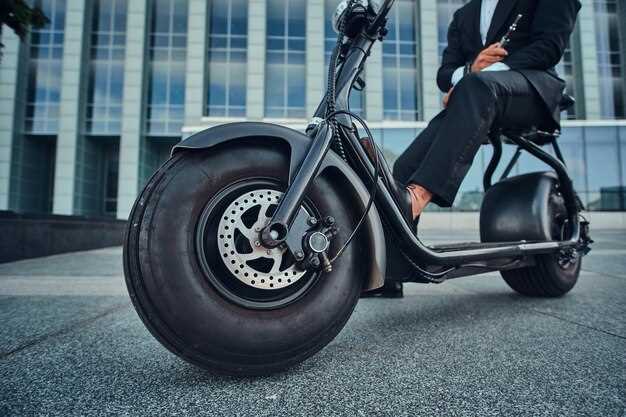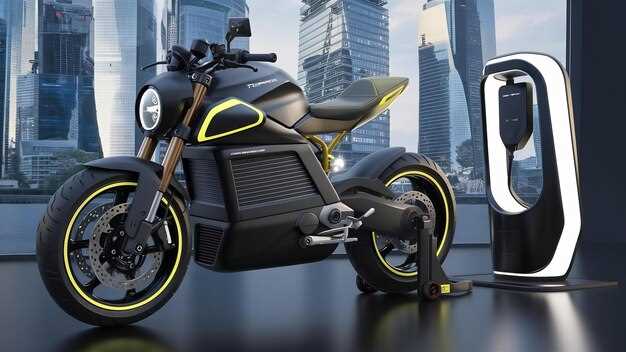

The rise of electric motorcycles has transformed the way we think about personal transportation. With the growing demand for more sustainable and environmentally friendly options, leading brands in the EV sector are making significant strides in developing innovative motorcycle models that cater to the needs of tech-savvy riders. As traditional combustion engines face challenges related to energy efficiency and emissions, electric models present a cleaner and more efficient alternative.
In this rapidly evolving market, various manufacturers are stepping up to the plate, introducing cutting-edge technologies and captivating designs that not only enhance performance but also provide an exciting riding experience. As consumers increasingly prioritize low operating costs and reduced environmental impact, the competition among these brands is intensifying. Consequently, they continuously push the boundaries of innovation and style to attract a diverse customer base.
This article will delve into the top players in the electric motorcycle market, highlighting their unique offerings and the technological advancements shaping the future of two-wheeled electric mobility. By examining the strengths and strategies of these leading brands, we can gain deeper insight into the trends and challenges that lie ahead in the realm of electric vehicles.
Top Electric Motorcycle Brands and Their Key Innovations

The electric motorcycle market has witnessed remarkable growth, with various brands leading the charge with innovative solutions. Each brand brings unique technologies and features that push the boundaries of performance and sustainability in electric bikes.
Harley-Davidson, a legendary name in motorcycle production, made a significant entry into the electric segment with the LiveWire. This model emphasizes performance, featuring a torque output of 0 to 60 mph in just 3 seconds. Its innovative battery management system allows for a range of 110 miles in the city, making it a strong contender in the electric motorcycle arena.
Zero Motorcycles is recognized for its pioneering electric bikes, equipped with advanced technologies. Their ZF series includes models with customizable power delivery and regenerative braking systems. Zero’s innovative use of lightweight materials enhances performance, while their battery technology extends riding range and improves charging efficiency.
BMW has also embraced the electric motorcycle trend with the introduction of the C Evolution and the recently unveiled CE 04. These electric scooters and motorcycles are characterized by their stylish design, integrated technology, and impressive range. BMW focuses on smart connectivity features, such as a built-in navigation system and mobile app integration, ensuring a modern riding experience.
Electric Motion stands out with its off-road electric motorcycles. Their innovative designs prioritize lightweight builds and advanced power delivery, catering to adventure enthusiasts. The company integrates technologies such as a Michelin Trial Competition tire and adjustable suspension, enhancing the overall riding experience on rugged terrains.
Porsche is venturing into electric bikes with its e-bike series, which combines high-end technology with sophisticated design. The Series includes features like a powerful mid-motor system, ensuring smooth acceleration and superior handling. This innovation aligns with Porsche’s commitment to performance and luxury in the electric vehicle sector.
In the realm of mass-produced electric motorcycles, Energica leads with its performance-oriented models. The company’s bikes are known for their cutting-edge battery technology, including fast-charging capabilities that allow for a 0-80% charge in 40 minutes. Energica’s commitment to performance is evident in their high-speed capabilities, offering an engaging ride for enthusiasts.
Finally, Gogoro has made waves with its electric scooters, focusing on urban mobility solutions. The innovative battery swap system allows users to quickly exchange depleted batteries for fully charged ones, addressing common range anxiety issues. Gogoro’s approach to electric bikes emphasizes convenience and sustainability for city dwellers.
These brands demonstrate the diverse landscape of the electric motorcycle market. Each company is dedicated to innovation, improving the performance, sustainability, and overall experience of electric biking.
Comparison of Electric Motorcycle Performance Metrics
When evaluating electric motorcycles (e-motorcycles), several performance metrics are critical for consumers seeking a reliable and powerful bike. Key metrics include acceleration, top speed, range, charging time, and power output. These factors significantly influence a rider’s experience and dictate the choice among leading brands in the EV motorcycle market.
Acceleration is often one of the most exciting aspects of performance. Many electric bikes boast impressive 0-60 mph times due to the instant torque provided by electric motors. Manufacturers like Zero Motorcycles and Harley-Davidson’s LiveWire have focused on optimizing this metric to offer thrilling rides. Typical acceleration times for high-performance e-motorcycles can range between 3 to 4 seconds.
Top speed is another fundamental measure. Electric motorcycles can achieve speeds comparable to, if not exceeding, traditional combustion-engine bikes. Models such as the Lightning LS-218 can reach speeds exceeding 200 mph, showcasing the technological advancements in electric bikes. However, most standard models are designed with a top speed limit appropriate for city and highway use, usually ranging between 70 to 120 mph.
Range, the distance an electric motorcycle can travel on a single charge, is crucial for riders interested in long-distance journeys. Leading brands have improved battery technology, resulting in ranges between 70 to over 200 miles, depending on usage conditions and riding styles. Notable e-motorcycles, such as the Energica Ego, provide a robust range suitable for extended rides, while others may cater more to urban commuting.
Charging time is an essential performance metric that greatly impacts the convenience of owning an electric motorcycle. Variations exist based on the charging method used. Standard home charging setups may take several hours, whereas fast-charging options at public stations can reduce this time significantly to about 30-60 minutes for most models. Consumers should consider their charging options when selecting an EV motorcycle.
Power output, typically measured in kilowatts, reflects the overall capability of the electric motor. High-performance electric bikes commonly have outputs ranging from 10 kW to over 100 kW, significantly affecting acceleration and top speed. Brands like Zero and Energica are known for their powerful models that cater to performance enthusiasts.
Ultimately, understanding these performance metrics allows potential buyers to make informed decisions when selecting an electric motorcycle that aligns with their riding preferences and lifestyle. As the market continues to grow, advancements in technology promise to enhance these metrics further, delivering even better performance for e-motorcycles in the future.
Future Trends and Emerging Technologies in EV Bikes

The electric motorcycle industry is on the brink of significant transformation, driven by technological advancements and changing consumer preferences. As the demand for sustainable transportation grows, the evolution of electric bikes and motorcycles is expected to accelerate.
Battery technology is at the forefront of this evolution. Innovations in lithium-ion batteries are yielding lighter, longer-lasting power sources. Solid-state batteries are particularly promising, as they offer greater energy density and improved safety. Future electric motorcycles could achieve ranges exceeding 300 miles on a single charge, making long-distance travel more feasible.
Another notable trend is the integration of smart technology into electric bikes. Manufacturers are increasingly incorporating features like connectivity, navigation, and advanced safety systems. These enhancements allow riders to monitor battery health, access real-time traffic updates, and utilize adaptive cruise control functionalities.
Lightweight materials such as carbon fiber and advanced alloys are becoming more prevalent in motorcycle construction. These materials not only reduce overall weight but also enhance durability and performance. The use of such materials can significantly improve the efficiency of electric bikes, allowing for quicker acceleration and better handling.
The rise of urban mobility solutions and shared mobility services is shaping the market for electric motorcycles as well. Companies are developing models specifically designed for ride-sharing platforms, catering to consumers who prefer flexible solutions over ownership. This trend is particularly popular in densely populated urban areas.
In addition, advancements in charging infrastructure are critical to the future of electric motorcycles. The development of fast-charging stations and wireless charging technologies will enhance the convenience of owning an electric bike. As infrastructure improves, range anxiety among potential buyers will diminish.
Finally, the environmental impact of electric motorcycles continues to be a focal point in the industry. Future trends will emphasize not only the reduction of emissions but also the use of sustainable materials and practices in manufacturing. Companies that prioritize environmental sustainability will likely gain a competitive edge in the market.
